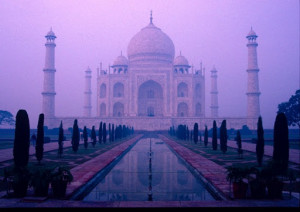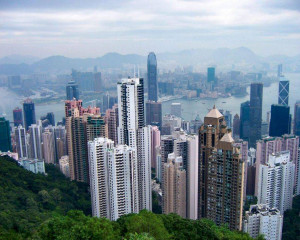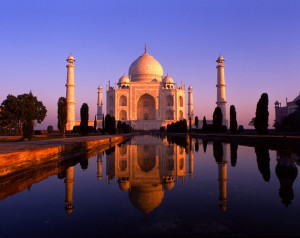Namaste, Shri S. Gurumurthyji and I have had an exciting conversation on his ideas of development and economics. In part one you saw him explain the rise and fall of the Western development model. He explained what’s different and distinct about this Western model and how it’s based on their metaphysics, their theology, and their civilizational assumptions. Why this particular model did so well for the past few hundred years and why it won’t do well anymore now. He explains the rise of alternative models and the importance of every civilization having its own development model. Now you will watch part two of our conversation. In this, Gurumurthyji explains prospects for India developing its own model, how this model will be different than the Western model, how it will be better for our civilization, how we’ve made some mistakes blindly copying the Western model, how other civilizations like China are developing their own model. So this is important because we want to decolonize India’s economic theories and create our own. Please watch. The government of India has been watching this, the UPA government; they just shut their eyes to it. It is only the government which came in the NITI aayog, when the cabinet gave the mandate to NITI aayog, which they constituted as a think-thank: what you should do for India.

There they said that model from outside cannot be transplanted into India, you have to develop a model, which will work in and for India, it’ll be a bharati approach to development. Of course, there were several other things which they said, but the important point is that the Indian government for the first time took notice of the global developments which have been taking place from 1995, with the Francis Fukuyama’s writing, and then settled back governors of the G20 nations, then the World Bank, then the United Nations. Now the Indian government has at least philosophically accepted this, that there has to be an Indian model for development. -So they opened the door for a new kind of inquiry?
-Correct. But the nation is not prepared, academia is not prepared, -intellectuals are not prepared.
-Business are not prepared? Corporate people? Or not?
-Corporate people maybe, because they are probably the ones who understand. Politicians and corporate people are probably the ones who may understand India better, -not the academics or intellectuals.
-But aren’t the corporate people too invested in the international markets?
-Too much controlled by them?
-You see, what the corporate people… Because I move with the corporate people, I advice many of them, they’re very close to me. They can shut out economics from culture and deal with it individually. They will never give up the culture, but at the same time, they will not give up the advantage of dealing with the global market according to its rules. So, they’ll be able to play it, but they know the truth. So, that there has to be an Indian model for the development is no more a suggestion or theory, it is something which has now come to be recognized. But no work is being done. You may ask me why. Because there is no India-centric thinking on any subject in India, then how do you develop India-centric thinking in economics? There’s no India-centric development in sociology, for instance. We still follow the same western anthropological model, atomization of society, destruction of identities, and then subaltern theories. I’ll take the subaltern theories. Subaltern theory was developed by the church, that there is no social mobility for the lower castes, it is the upper cast who dominate. This has been some kind of the Marxist church-infused thinking. Completely demolished.

-In fact, one way the church wanted to deal with the Communists and the Marxists in Latin America is to assimilate some of those things and Christianize them. So, this subaltern theory as a result came out, because they wanted to give to the poor some alternative to a Marxist, communist revolution, so to keep them within the church, because they’re very devout Christians in Latin America, to keep them within the church they came up with this sort of, you know, liberation theology and stuff like that. To show that this subalternism, as a result, championing the underdog, but championing the underdog in a way that Christianity is a solution.
– There, the political conditions were not favorable, and so they had to do that, but here the political conditions are so favorable, it was loaded against the majority. There, they had only used this to divide the majority community, in religion, in polity and as a democratic force, there was no majority ruling India. Except the numerical majority. There was no cultural majority, there is no sociological majority, there is no philosophic majority in India. So, it became a numerical majority. And the numerical majority was constructed by the deconstructed social forces through these caste, community, region, religion. In this the minorities were protected, their identity was protected. The majority identity was completely left unprotected because the Hindus did not have an identified center of power. Like the church, for instance. But how this idea… that there has to be an Indian model for development is not being taken forward, is because of the overall academic, intellectual and political atmosphere, in which the political atmosphere has begun easy now. Today it is no more… 30, 40 years back to assert oneself as a Hindu required great effort. In fact, when I was in RSS, joined RSS in 1970-71, in fact there were hundreds of people who would dissuade me, why are you joining RSS? Why are you calling yourself a Hindu?
Look after your life. You are an intelligent man. That means the entire social atmosphere, the ecosystem was dissuading Hindus from public participation. And so, if you are a particular caste man you’ll participate, if you are a minority you’ll participate, if you are a communist you’ll participate, but those who think of India as a cultural entity, as a philosophical entity, as a tradition, value systems: no, public life is not good for you. You keep all this in private. So the entire hoary tradition of India was reduced to a private affair. So, this is what is going to produce the economic model. This is not in the academia, this is not in the public discourse, not in the media. So, to develop an Indian model today requires a much larger effort, than merely study of economics. Now, I’ll go into what is the economic issues. You know, whenever I discuss with people, there is the Prime Minister, or the Reserve Bank Governor, or someone, I made many presentations to them. They were shell shocked. You see, we began globalizing in 1991, he began bringing global capital, global technology, global models, management, everything. The corporate sector was given such a powerful push, lower rates of taxation import duty less, everything. So this organized sector, as it is called, corporate sector, public and private put together, which is supposed to be the fountainhead of Indian economy, between 1991 and 2014, the total employment that they added was just 2.8 million.
 – That’s it? This is in the economic survey, doesn’t require any research.
– That’s it? This is in the economic survey, doesn’t require any research.
-And all this big talk and very low impact on employment.
-Completely. I spoke to Mr. Narayan Murthy. Narayan Murthy said, no, we have our self-produced 3.75 million employment. I said, others have reduced, what it means? So, when I made the presentation, the prime minister said this is shocking. How did we survive? I said we survived, because of what your economic, national economic survey. They make a survey every ten years. That survey said there are 58 million micro-businesses, which produce 128 million jobs. So, it is this that has sustained India. But you must understand, for this sector there is no organized financing, Banks advance is only 5% -of the total requirements of twelve lakh-crores of capital.
-Even though their bad debts, that’s probably very low. -Nothing. 5% only we’re advancing. They are borrowing at 60%, 120%, 240%. Then the prime minister conceived the idea of Mudra. That you will lend to them, through an intermediary institution, the bank finance will be made available to an intermediary to lend it. The Reserve Bank of India said we’ll not allow any intermediary to be brought in, and if intermediary will not be brought in the banks have no capacity to lend to them directly. Immediately go to China. There is a beautiful book, written by two Harvard scholars on Deng Xiaoping and China. This is a book which came in 2013, where, equivalent to our micro-enterprises, which are called own-account-enterprises, there is a 28 million town-and-villages enterprises. This 28 million town-and-villages enterprises produced 128 million jobs. You know, how Deng Xiaoping built this up? Deng Xiaoping had a very big problem of having to conform to Karl Marx. Otherwise, he knew he could not do anything. Somewhere, Karl Marx wrote in his book, if you employ more than seven people you are a capitalist. So, Deng Xiaoping said if you’re employing seven people or less it is not capitalism. That is how he built private enterprises. 28 million small units, employing 10 people each, 128 million, it is the research done by Nobel laureates, it is these 28 million small units which lifted China out of poverty, by lifting 180 million people out of poverty, in 10 years.
-Very decentralized, good.
-The same thing was to be done in India, -the Reserve Bank stopped it.
-Which year was that? Now, 2016. It is still a struggle between the Central government and Reserve bank.
-Because, you cannot allow decentralized things.
-Control. You need control. This is the Western model. So, why I’m mentioning this, this is the philosophy, this thought, this structure, this education, this very psyche is working against the stated idea of an Indian development model. So, this requires a huge shake up. And this shake up cannot be done by the government because the government has to do fire fighting all the time. In India there is election every year.
-Though only five fears once you have a general election. -But some election is going on. Some election or the other, every election is a national election thanks to television. So, we are in a catch-22 situation. You cannot correct the economy unless you correct the sociology; you cannot correct the sociology unless sociology and economic relationship is made clear by the role of culture. Very small, very telling example of what is the impact of culture on Indian economy; just I’ll give you three examples. One, the role of the family. The family in India is probably the main driving force of the Indian economy itself. So, in 1991-92 when the tsunami of globalization came all my corporate clients, they were very worried about what would happen, and they all said that we may not be able to continue to do business in India. In fact people like Montek Singh Ahluwalia began telling them you better sell your industry. Because you can’t scale up your production to global levels, you can’t access global capital and all that. I began travelling across the country, listening to what Mahatma Gandhi was told by Gopal Krishna Gokhale.
That after you come back after a long time, you must travel across the country, for one year, never speak one word, just observe, and then you make up your mind as to what to do for the country. This advice I took, and began travelling from Ludhiana, Batala, Rajkot, Jamnagar, Morbi, right down to Tuticorin in about six years I covered about 16 industrial clusters along with a team of people. My idea about India completely changed. The real entrepreneurship is only in middle towns in India. There are about 2008 hundred artisan clusters, about 350 industrial clusters according to UNIDO study, which contributes to 60% of India’s productions and exports. Completely out of the radar of the government, of FICCI, of banks.

Pile of domestic garbage in landfill
-Which is the place with the highest per capita income in India?
-Ludhiana? I have asked this question at IIT, IIM and no one knows. It is a place called Morbi in Gujarat.
-OK. What do they do?
-The total population is 2.4 lakhs. 1.4 lakhs is employed. They run textiles, they run ceramics, they run diamond cutting. It is a mixture of Muslim and Hindu community. And once when Koyna Dam burst, they were wiped out. In 2001, there was an earthquake they were wiped out. Nobody. No IIM, no IIT has ever done a study of it, like in Ludhiana.
-How did they bounce back of all this?
-Social capital. Their capacity for community to support each other in difficulties, lend to each other. You know, this is prevalent because this is a relation-based society. If you have to define, the line of difference, the clear line of difference between the West and us, generally Asia, it is the difference between contract-based approach and relation-based approach. That’s a paradigm difference. In fact in economic also this is being recognized. A relation-based society can work with a market economy, but it cannot work with a market society. Where the society still begins functioning on market principles. Market is based on contract, efficiency, merit and things like that. But relations do not exactly function on this basis. So, a market society reduces a family, everything, even nation into a market, like America incorporated.
That approach is western, it is failing, it is becoming inefficient. So, a huge shift of economics, wealth-building, GDP is coming back to Asia: where Karl Marx and Max Weber went wrong: they never knew that prior to colonization, full-scale colonization, it is Asia which had 60% of world’s GDP, and India and China together almost 59-60%. It is colonization that reversed it and took the GDP to Europe, and it is now returning, because the western model has no sustainability. I’ll tell you three things: one, the colonialism lasted for 150 years, full blown colonialism lasted for 150. Communism lasted for 70 years. Globalization lasted for 25 years. You see? All these western approaches are having shorter shelf life, because there is no durability in western approaches. Once you reduce everything to the contract, sans culture, sans sociology, sans relationship, sans philosophy, its shelf life becomes less and less, you can see this, colonialism, communism and globalization. They have themselves given up, that it is not possible to have a one-size-fits-all model which was globalization. So, the point that we are coming to is that the state dependence is directly proportionate to independence from relationship. The more independent you are from your father, mother, husband, wife, -You become dependable of those guys.
-So, interdependence is the rule of social capital, we are dependent on each other, nobody is independent, nobody is free unless that person doesn’t want anything from the world. There is a beautiful sloka in Mahabharata “tyajet ekam kulasyarthe, gramasyarthe kulam tyajet. graamam janapadasyarthe, atmarthe prithivim tyajet” the meaning is this, that you compromise your personal rights for the sake of the family, there is a trade-off between the family and you, “tyajet ekam kulasyarthe, gramasyarthe kulam tyajet”, when it comes to the community, the family gives up certain rights to make the community, just as an individual gives up the rights to make the family, the family gives up some rights to make the village “graamam janapaasyarthe”, if you want to build a nation, then the villages have to compromise their rights, then you are only interdependent, “atmarthe prithivim tyajet”, a man who sees the self as the most important thing, for him the world is nothing, he is only out of this system. The real free man is the one who doesn’t want anything in this world. This is our basis, you cannot say, I want to be free, but I want everything, my family has to educate me, but I’ll be free of my family, that the society will have to do this but I have nothing to do with the society, the nation will have to do this, and I’ll say I’m a global citizen. This is completely western-oriented anthropological modernity, which is fatiguing and failing in the West, because Max Weber said, I misunderstood him first, I thought he was promoting this, but he was perceiving this… -It was more a diagnostic than a prescription.
-Yes, he was not advocating this, he was saying this is what is likely to happen, if you see the evidence of how things have moved forward it will be this. Atomized families, atomized communities, atomized individuals worshipping material world. But he said, this will lead to disenchantment of the world. This is the word he uses. And move towards limited dictatorship and religion. This is what he has prognosticated for the West. Because you cannot sustain these ideas which have less and less shelf life. For a society which is going to live for thousands of years. So, I think the kind of development which is taking place in the West, questioning the values of the “Age of Enlightenment”, to what extent you can have individualism, to what extent you can discount the society, religion and all that. This is now sourced in Max Weber’s theorization of disenchantment with the world which will develop in the western anthropological modernity. It is at this time when the West is probably getting weakened. Not on technology, not on anything, not on its methods, but on its philosophy, way of life.

-After all, there is a…
-This a big defeat for Christianity, that is what it is.
-Absolutely, they promoted it and they got it. You see, even Christ he said I have come here to separate you, the father from the son, brother from the sister, the root of destruction of relationships is in Christianity itself.
-And the whole biblical theory that God made the earth as a man’s property to exploit. No rights of the earth itself, no sacredness of the earth, it is just material property. Human relationship with earth, is as good as human relationship with one’s own family, one’s own village, one’s own surroundings.
-That’s not there. And you know, this conservation movement in the West -is only to conserve the raw materials so you don’t run out of it.
-You conserve it for future. -So, it’s material, it is only a material goal, that you conserve this you don’t put chemical dump in the river, because it’ll be bad for the fishing industry. -So, it is a kind of..
-Absolutely. Ultimately, it is anthropocentric world. It is not an eco-centric world they’re thinking. But one difference is there, some Scandinavian thinkers have begun thinking of deep ecological consciousness. It’s come somewhere near our way of our Isavasya Upanishad, “isavasyam idam sarvam”. It comes somewhere near that, but the West has a very long way to go to understand this. So, now coming back to where we are, I think that we need to begin with assertion of the Indian civilization. Time has come. Because the West is fatigued. It may have technological superiority, this or that. But the human element is weakening. The state is in a flux because of multiculturalism. There is no core culture concept in the West.
-And they don’t know how to handle it, because they don’t have a model for this.
-Because they don’t have a core culture. You see, because they destroyed the concept of core culture. Even America, which have the idea of core culture. In fact, in his theory of civilization clashes, Huntington said, the core culture of America is WASP, but America is not in a position to accept it.
-He is still regarded as some kind of outlandish person.
-Yeah, and kind of provoking clash and all that stuff.
-If America had accepted, WASP is our core culture, we can live with other cultures, that’s different.
-No, there’s no core culture, it multiculture.
-You see, this hypocrisy, of claiming there is no WASP culture and we are all open, this post-modernism, led them to policies where a whole lot of non-WASP people have come in and they don’t know how to deal with it. We know how to assimilate and we have an open system, a whole different system but different jatis can coexist and so on. But America doesn’t have that. So the structure being very centralized, but now the composition of society is not willing to conform to one centralized hierarchical thing, so many immigrants, so many languages, so many this and that, America does not know how to handle this much diversity.
-Because, their mind is homogeneous, but they have to live with diversity.
-So, the homogeneous mindset has created a diversity through immigration and other policies, because of a kind of hypocrisy, and a belief in a lie that they started believing, that we are going to be post-modern, beyond identities, beyond borders, never really understood that this creates issues they don’t know how to solve.
-Because, post-modernity has no philosophy. Unfortunately in India, because we were not used to this capitalist model, we did not distinguish between the market segment, and non-market segment, and so it didn’t work. This work was actually done by Credit Suisse an Asia equity division which said the listed corporates, -they produce only 5% of India’s GDP.
-That’s a big thing to understand. To reveal that is a big thing.
-Listed and unlisted corporates put together, produce only 15% of India’s GDP.
-The rest are tiny, tiny…
-Agriculture, tiny, these things. And both put together produce only 9% of India’s employment. All this was slowly coming out. But at the time I said, unless you harness the middle India, which functions on relationships, largely. Even corporate sector, functions only on relationships and pretend it functions on contracts. In Birlas, in Tatas -It’s mostly family.
-Family and people last for lifetime nobody drops out of TVS or Tatas, or Murugappa, Birlas, anyone who joins employment, joins , it’s a relationship between the employer and employee.
-Like in Japan, it’s been… Asia is different. So, I could see it empirically, I saw something different happening. For example, the entire Ludhiana development was because of a community called Ramgharis, They were these ironmongers, blacksmiths. The same thing in Rajkot. Wherever I go, one community was driving the development, and others were benefitting out of it. So, I zeroed in on the concept of family and community as social capital. Which was recognized by Putnam, and which was recognized by Francis Fukuyama as something which is an evolution out of culture. That is the mainstay of the Indian economy, the entire middle-level economy.
-So, Traditionally, that was the role of the jati structure.
-The shrenis. And that functions even today, and that makes the market economy work and the best example I can give you is Tirupur, which was studied by Boston Consulting. One R. K. Chari wrote a book in 2001, as to how Tirupur has emerged as the knitwear capital of India. 68% of the Tirupur exporters are educated less than 10th standard. Only 7% are graduates. They export 5 billion dollars worth in knitwear garments today. They negotiate at the global level. Tripura is the only place where I went where I heard, sir, tomorrow is the US Fed meeting, we don’t know what’ll be the change in the interest rate. I was stunned, this so-called illiterates are talking about that, because it’s going to affect that export interest. I found a huge amount of capacity building on traditional lines. The economies are stable, and they are not bothered by globalization. They are not bothered by equity market.
 -There is no single point of failure, it’s all decentralized.
-There is no single point of failure, it’s all decentralized.
-Absolutely, and one helps each other. So, I wrote a book, which I could not publish, of course, that there is intense relationship between caste and economics in India.
-We should publish it. One of the things we want to do is to publish that book, and develop a conference, we want to develop a swadeshi Indology conference on the whole social, economic matrix with the Indian model, and this would be a wonderful thing to do.
-So, when I brought this out at that time I had said this Mandal movement, it’s a political movement, actually should be a cultural movement. You need not have to go and ask a carpenter, come on, come and attend ITI classes and I’ll give you certificate. You have to go there, see how he works and give him certificate. It is an empirical talent that is available already. But you classify them as unskilled workers. A mason, blacksmiths, goldsmiths, carpenters, and there are 315 varieties of traditional trade in India which is classified as unskilled because they have not come to your school.
-They classify uneducated people and educating them means removing them from that.
-Correct. Unless you get unskilled you cannot be classified as skilled. I tell you, there is no greater way of damaging the Indian economy. It is good that they don’t want to be part of this… I had been to Jalandhar, it is a revealing incident to me. I had gone to a carpentry works, and the proprietor told me, sir, the Australian Cricket Control Board places, they order for cricket bat only on my… 1994. All cricket bats. Everywhere in Jalandar in one corner. He said, sir, you look at the carpenter, he will make 50 willows a day, see the Maruti car parked outside, that is his car. He will come whenever he wants, I tell him, you produce 50 willows or 40 willows depending upon my export order, you have to produce. Sir, he will come and if his mood is good he will produce 100 willows and he will not come tomorrow. He has a Maruti car, he has his own house, but still a carpenter. I went and asked him: did you go to an ITI? He said, what’s ITI? Incidents after incidents. A Patel imported a diesel engine in 1954, and he dismantled it, and he found that by reverse engineering he could make it, that is the diesel engineering manufacturing in establishment of 2500 ancillaries and 55 assembling units in Rajkot.That is the springboard of prosperity. They don’t know one word of English. No one knows what English language is in Morbi. Surat which has emerged as the largest business center in Gujarat. 25, 30 years back, it was a public lavatory, because all the villages used to come and dirty the city. It was a political problem. How to drive them, they used to come with their cattle, there was no water, everybody thought these villagers were making our city rotten.
They came and learned diamond cutting. Now nobody comes to Surat. 9 out of 10 diamonds are cut in India. Indians have taken over, out of 24 billion dollars diamond trade Two-thirds, 16 billion dollars, diamond trade is in the hands of Indians today. -And Surat is a large part of it. -No university has studied it. Nobody even knows about it. So, how will you develop an Indian model which is based on relations? First, you don’t even have the knowledge of it. We haven’t studied the case studies. -So, I said, because of all this I produced a theoretical model that families and communities will drive the economic development of India. And we may not need foreign capital, except marginally. And everybody abused me and this Jagdish Bhagwati, the American economist, Columbia University, and he produced a 72-page paper in which three pages he dealt with on India family and women. This is important, in fact you should reproduce those three pages. In that he said, you see, your families are saving 19% of their income, 19% of the GDP, which is waste. You must bring down your savings to 10%, convert this 9% into expenditure. So you buy more goods then, there’s more production, then more employment, then nobody can stop you from being a top economy in the world. So you should cut your savings.
I know you produce such rotten goods, nobody is going to buy these goods, so, bring imported goods, cut down your import duty, bring foreign technology, produce goods here, the Government of India began doing all this, he said, this is just not sufficient, your Indian women are so responsible, they want to take care of their children, their husband, their in-laws, this is not going to work, you must make them consumers, you must produce a desire in them to buy, unless you turn women into buyers, your economy is not going to…

India Agra. Taj Mahal, shortly after sunrise.
-So, the whole Americanization of Indian family life and women.
-Completely. So, we began doing it. So, huge advertisements, and there were, just like we praise Gods goods are praised by songs and all that. But you know the Indian women sang the songs, but they did not buy the goods. This is reflected in the fact, the family savings and GDP went up from 19% in 1991 to 28% in 2000.
-The opposite of what he wanted.
-Absolutely. In fact, between 1981 and 2007 they had captured half and half the command economy period, and liberalization period in form, there was absolutely no difference in the behavior of the people as to how they would allocate their income, to spending or saving. In spite of the change in the government policy there is no change in the behavior of the people. So, our savings went up, national savings went up to 37%, national investment went up to 49%, that is our great growth rate went up to 9.5 %. This was captured, by no less than an economist by name Shankaracharya, was adviser to the government, this is stunning, that India is able to post 9.5% growth rate without foreign investment. This, what happened, but when this question was put to Jagdish Bhagwat: Gurumurthy says, India will develop more by domestic savings and domestic consumption. Who is Gurumurthy? He’s one of the persons who is articulating a very powerful antiglobalization idea in India. Oh, you call him an economist, if he can be an economist, you can call me a bharatanatyam dancer. This is the arrogance of the position. So the families not only provide measured consumption, capital needed, it is because there is self-restraint on an individual. There is propensity to save. Yes, to take care of the children, yes, to take care of the parents, yes, to take care of the near and dear, nobody’s incomes belongs to himself in India. This is a relationship. No one’s money belongs to only oneself in India. So this is one part, the other part is social security. In the West social security is provided by the government. The discounted value, future social security, health security is estimated at 68 trillion dollars in America.
-They’ll never be able to fulfill that. It is going to go bust, it is bankrupt, it is just technically they don’t want to admit it.
-So, if they admit it the economy is over. You are now taking over your family functions.
-Taking care of the elders, infirm people. -Actually, this is the biggest failure of the state that is so clear documented.
-This is a failure of the state.
-There is a brilliant document, American Economy in Transition, 1980, by National Bureau of Economic Research in America, all the leading economists came together and held a conference, in which Milton Friedman, the Nobel Prize winner, he was also there. He said, what we are doing is wrong, we are taking over family functions, we have already handed over the kitchen to the multinationals. We are now handing over the rest of the areas of functioning of the family to the government.
-Families will cease to exist.
– Big statement. So, what happened, now in America how many families cook today? Virtually none.
-The kitchen is MacDonald’s. -So, families have been nationalized. All family functions have been nationalized. Government functions like water supply, these are being privatized. So, this is modern economics. Nationalize the families, and privatize the state. Why you’re forced to nationalize families? Because your anthropological modernity -is destroying relationships.
-Very big point you made.
-Throwing people out of the family’s safety net. So you need a state safety net. It is not that economics brought this about, it’s your sociology which brought about this… So, the social model destroyed the economy also. Put burden on economy. The family savings, to total savings in America in 1960 was 80%. Corporate savings was 20%. In 2006, third quarter, the corporate savings, national savings was 120% because the family’s savings was minus 20%.
-All in debt. Borrow and spend.
-And for the president of America led this campaign. That we should buy. So, destruction of the relationships, substitution of the contract, led to state dependent society. Now there are many researches in America, how 50% of the American families are receiving doles, and how we have become a state dependent society. We are free from our near and dear, but we are dependent on the remote state. Thank you for watching part two of my conversation with Gurumurthyji in which he explained the prospects for developing an Indian economic model. In part three, we will discuss what is India’s future in the world.



